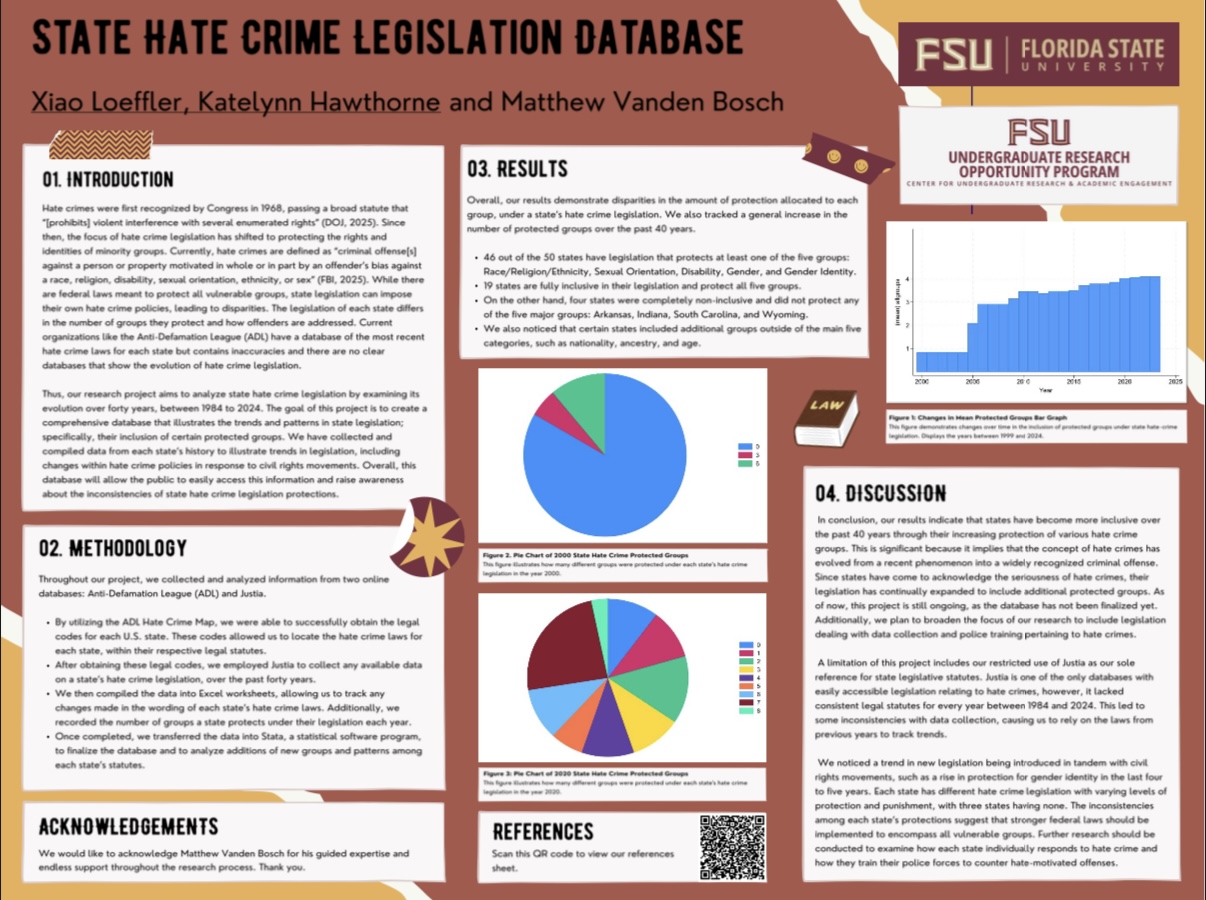Research Symposium
25th annual Undergraduate Research Symposium, April 1, 2025
Katelynn Hawthorne Poster Session 2: 10:45 am - 11:45 am/ Poster #231

BIO
Katelynn Hawthorne is a sophomore at Florida State University, pursuing a dual degree in Criminology and International Affairs, with minors in U.S. Intelligence and Russian/Eastern European Studies. She is scheduled to graduate in Fall 2026 and plans to attend law school to earn her Juris Doctorate. Currently, Katelynn is involved in a research project focused on the evolution of state hate crime legislation. The project aims to develop a comprehensive database to identify patterns and trends in hate crime laws across the country. In addition to her research, Katelynn is an active member of Lambda Alpha Epsilon (LAE) and the Student Government Association (SGA).
State Hate Crime Legislation Database
Authors: Katelynn Hawthorne , Matthew Vanden BoschStudent Major: Criminology and International Affairs
Mentor: Matthew Vanden Bosch
Mentor's Department: College of Criminology and Criminal Justice Mentor's College: College of Criminology and Criminal Justice Co-Presenters: Xiao Loeffler
Abstract
Hate crime legislation is a recent phenomenon in the United States, as the first state hate crime laws were passed in the 1980s. Since then, the federal government has also passed hate crime legislation, specifically addressing hate crimes based on race, gender, gender identity, sexual orientation, and disability. In an increasingly divided world, it’s important for states to establish this legislation to protect their communities. Thus, our research project analyzes the evolution of state hate crime legislation between the years 1984 to 2024. The goal of this project is to create a database that illustrates the trends and patterns in state legislation. This database was created utilizing information from two online databases: the Anti-Defamation League (ADL) and Justia. We compiled the hate crime laws and state statutes into Excel spreadsheets, allowing us to track changes made in the wording of state legislation. Once completed, we employed the program Stata to finalize the database and to analyze additions of new groups and patterns among each state’s statutes. Overall, our results demonstrate a disparity in protection among minorities across the United States. However, we tracked an increase in the number of protected groups within the past forty years, suggesting that state hate crime legislation has progressively become more inclusive. Lastly, inconsistencies among each state’s protections indicate that stronger federal laws should be implemented to encompass all vulnerable groups. Further research should be conducted to examine how states respond to hate crime and how they train their police forces to counter hate-motivated offenses.
Keywords: Hate Crime, Crime, Legislation, Laws


